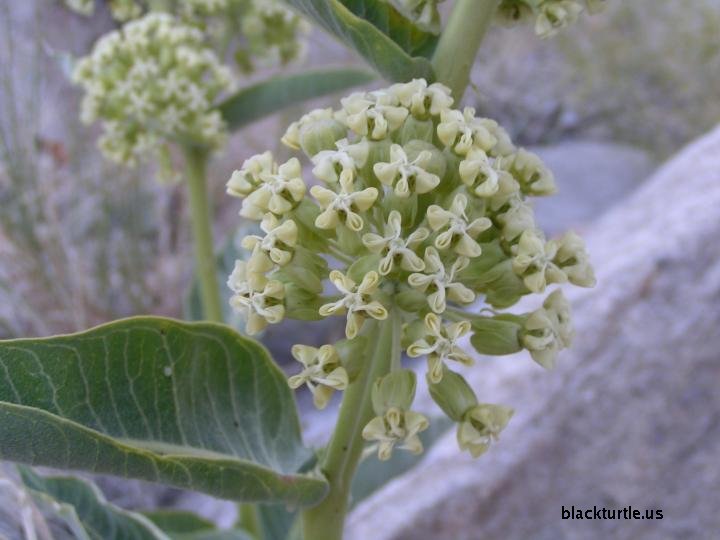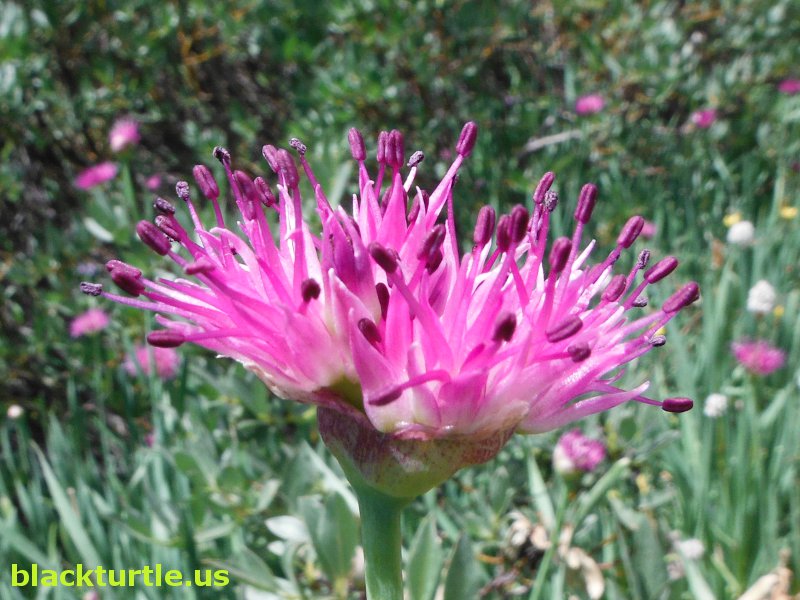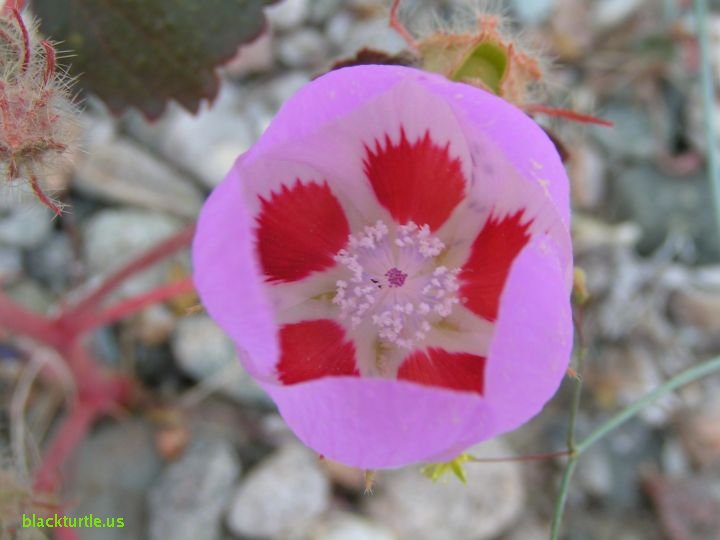
|
Turtleback
January/February
Best described as a round mound on the ground, this small shrub does in fact
look a bit like a turtle in terms of its shape. However, it produces yellow
flowers and grayish-green leaves and so it doesn't look that much like a
turtle or tortoise that's likely to be encountered in the Mojave Desert.
This small plant is in the Sunflower Family and it grows below 3000 feet in
washes and sandy flats throughout the Mojave Desert and beyond.
(Click here for more info!)
|

|
Desert Milkweed
March/April
One of the most interesting inflorescences of any plant in the desert
belongs to the desert milkweed (Asclepias erosa). It is described as
umbel-like and a particularly interesting feature is that it forms a nearly
complete sphere. Various forms of milkweed are found throughout the
southwest. This particular species is found in southwestern deserts below
6000 feet in elevation. Local Native Americans are said to have rubbed the
milky sap onto warts in order to soften them.
(Click here for more info!)
|

|
Aspen Onion
May/June
Until recently onions were considered to be members of the Lily Family
(Liliaceae), but now they have their very own family known as the Onion
Family (Alliaceae). Thanks to breakthroughs in biology, genetic analysis has
helped scientists to better understand the relationships between various
species and as a result much reorganization has occurred. Aspen onion is not
likely to be found in Death Valley, but it is likely to be found throughout
the Great Basin at elevations above 6000 feet.
(Click here for more info!)
|

|
Desert Five-Spot
July/August
One of the most emblematic wildflowers of the Death Valley area is the
Desert Five Spot (also known as Eremalche rotundifolia). It's an attractive
annual, usually less than a foot high, which produces showy flowers that are
rose-pink with five purplish spots on the insides of the petals. The plant
is widespread throughout the desert southwest and produces flowers during
the spring from March through May.
(Click here for more info!)
|

|
Shooting Star
September/October
Mary DeDecker in her book about the flora of the Northern Mojave Desert
lists Shooting Star as a wildflower that can be found in the Panamint Range.
Of course, she indicates that it exists there between the elevations of 9500
and 10,000 feet. This pretty much limits this plant to Eagle Springs since
Shooting Star needs a fair amount of moisture. I have not visited Eagle
Springs for over a decade and back then I never carried a camera with me and
so I have not yet got a picture of a Shooting Star plant in the Death Valley
area. In fact, the picture displayed here was taken in the Sierra Nevada
Range and so at this point I'm taking it on faith that Mary DeDecker's
observation of Shooting Star in the Panamints is something that can be
replicated now.
(Click here for more info!)
|

|
Ground Cherry
November/December
Although the flowering season for Ground Cherry (Physalis crassifolia) is
said to be from March to May, it also produces some flowers during late
summer and fall. In fact, the neat thing about this time of year is that it
is possible to see both the flowers and the unusual fruits of this plant.
The fruits are most often compared to miniature lanterns due to their
inflated and angular structure. BTW, I observed some very nice ground cherry
specimens in Knight Canyon (located in the Argus Range) this last week.
(Click here for more info!)
|
| 
















